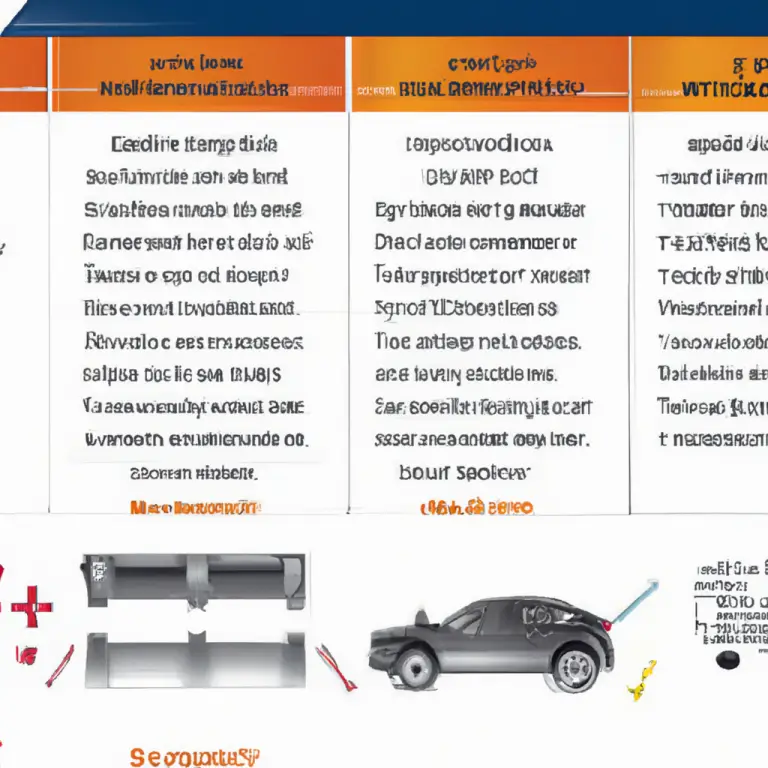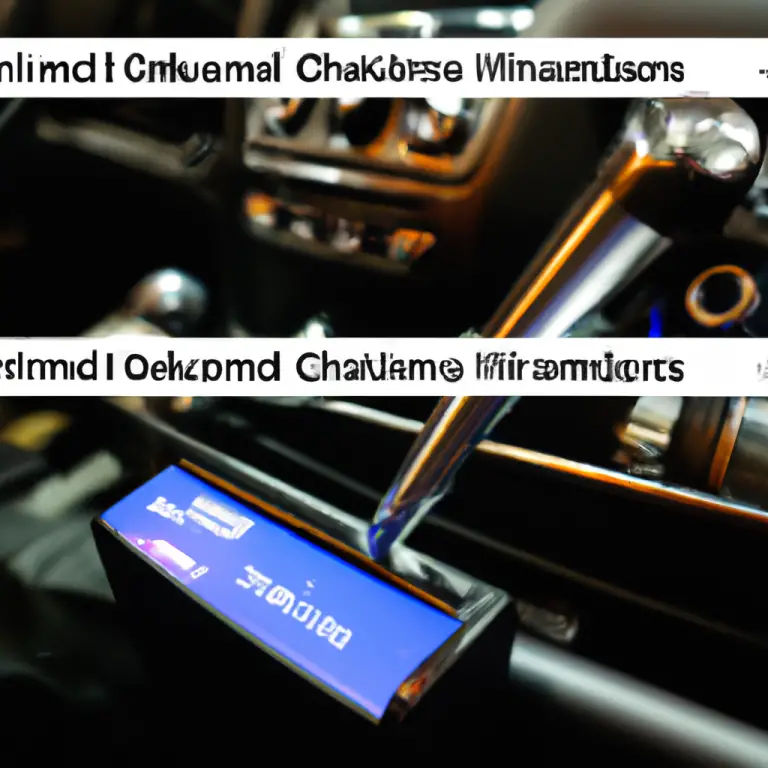Ford F150 Coolant Leak between Engine And Transmission
A Ford F150 coolant leak between the engine and transmission refers to a situation where the coolant is leaking from the engine area and dripping down to the transmission area. This type of leak is commonly caused by a failed intake manifold gasket,
Which is responsible for sealing the engine’s coolant passages. Over time, the gasket can become worn or damaged, leading to a leak. The coolant can then flow down and accumulate in the transmission area, causing potential damage to the transmission if not addressed promptly.
- You Can See: Ford F150 Coolant Leak Bottom of Engine
A coolant leak between the engine and transmission is a serious issue that requires immediate attention from a professional mechanic to prevent further damage to the vehicle.
F150 Coolant Leak Fix
Why is my ford f150 coolant leak between engine and transmission?
A Ford F150 coolant leak between the engine and transmission is a common problem that can be caused by a few different factors. Here are the steps to help identify why your Ford F150 is experiencing a coolant leak between the engine and transmission: First, check for any visible signs of coolant pooling between the engine and transmission. This could indicate a leaking gasket or seal. Next, inspect the radiator hoses and connections for any signs of damage or wear. Additionally, consider checking the ford f150 rear window for any potential cracks or leaks, as these can sometimes cause water to enter the cabin and be mistaken for a coolant leak. If the issue persists, it may be necessary to have a professional mechanic conduct a pressure test to pinpoint the exact source of the leak.
Inspect the Intake Manifold Gasket
The most common cause of a coolant leak between the engine and transmission in a Ford F150 is a failed intake manifold gasket. Inspect the gasket for any signs of wear or damage, such as cracks or breaks. If the gasket is damaged, it will need to be replaced.
Check the Radiator and Hoses
Another potential cause of a coolant leak is a damaged or faulty radiator or hoses. Inspect the radiator for any signs of damage, such as leaks or cracks. Also, inspect the hoses for any signs of wear or damage, such as cracks or holes. If any of these components are damaged, they will need to be repaired or replaced.
Inspect the Water Pump
A damaged or faulty water pump can also cause a coolant leak between the engine and transmission. Inspect the water pump for any signs of damage or leaks. If the water pump is damaged, it will need to be replaced.
Check the Head Gasket
In some cases, a damaged or faulty head gasket can cause a coolant leak between the engine and transmission. Inspect the head gasket for any signs of damage or leaks. If the head gasket is damaged, it will need to be replaced.
Inspect the Freeze Plugs
Freeze plugs are small metal plugs that are designed to pop out if the coolant inside the engine freezes. If the freeze plugs become damaged or corroded, they can cause a coolant leak. Inspect the freeze plugs for any signs of damage or corrosion. If the freeze plugs are damaged, they will need to be replaced.
Note: identifying the cause of a Ford F150 coolant leak between the engine and transmission requires careful inspection of various engine components. It is important to address any leaks promptly to prevent further damage to the vehicle.
If you are not confident in your ability to diagnose and repair the issue, it is recommended to seek the assistance of a professional mechanic.
Symptoms of Coolant Leak Between Engine and Transmission in Ford F150″
A coolant leak between the engine and transmission in a Ford F150 can lead to a range of symptoms, some of which can be more severe than others. Here are some of the common symptoms that may indicate a coolant leak between the engine and transmission in your Ford F150:
Low Coolant Level
A coolant leak between the engine and transmission can cause a loss of coolant from the engine, resulting in a low coolant level in the reservoir or radiator. If you notice that the coolant level is consistently low, it could be an indication of a coolant leak.
Overheating Engine
Coolant is responsible for regulating the temperature of the engine. If there is a coolant leak between the engine and transmission, it can cause the engine to overheat. You may notice the temperature gauge on the dashboard climbing into the red zone or the engine overheating warning light turning on.
Sweet Smell or Visible Coolant
If there is a coolant leak between the engine and transmission, you may notice a sweet smell coming from the engine bay or see coolant dripping from under the vehicle. It is important to take note of any visible signs of a coolant leak and address them promptly.
Transmission Issues
Coolant leaking into the transmission can cause damage to the transmission, leading to issues such as slipping gears or difficulty shifting. If you notice any unusual transmission issues, it is important to have them inspected by a professional mechanic.
In conclusion, a coolant leak between the engine and transmission in a Ford F150 can cause a range of symptoms, from low coolant levels to transmission issues. If you notice any of these symptoms, it is important to have your vehicle inspected by a professional mechanic to identify and repair the issue. Prompt action can prevent further damage to your vehicle and save you money in the long run.
How to fix ford f150 coolant leak between engine and transmission
Fixing a Ford F150 coolant leak between the engine and transmission requires careful diagnosis and repair of the underlying issue causing the leak. Here are some of the steps a professional mechanic might take to fix a coolant leak between the engine and transmission in a Ford F150:
Identify the Cause of the Leak.
The first step in fixing a coolant leak is to identify the cause of the leak. This can involve inspecting the intake manifold gasket, radiator, hoses, water pump, head gasket, and freeze plugs to determine where the leak is originating.
Replace the Failed Components.
Once the source of the leak is identified, the failed components will need to be replaced. This may involve replacing the intake manifold gasket, radiator, hoses, water pump, head gasket, or freeze plugs, depending on what is causing the leak.
Flush and Refill the Cooling System.
After the failed components are replaced, the cooling system will need to be flushed and refilled with fresh coolant. This helps ensure that the system is clean and free of any debris or contaminants that may have accumulated due to the leak.
Test the System for Leaks.
After the repairs are completed and the cooling system is refilled, the system will need to be tested for leaks. This involves running the engine and monitoring the system for any signs of leaks or overheating. If there are no leaks or issues, the vehicle is ready to be returned to the owner.
In conclusion, fixing a coolant leak between the engine and transmission in a Ford F150 requires careful diagnosis and repair of the underlying issue causing the leak. If you are not confident in your ability to diagnose or repair the issue, it is recommended to seek the assistance of a professional mechanic to ensure that the repairs are done correctly and to prevent further damage to your vehicle.
Is the Rear Window Leak Recall Related to the Coolant Leak Issue?
The ford f150 rear window leak problem is a separate issue from the coolant leak recall. While both involve leaks, they occur in different parts of the vehicle. The rear window leak problem refers to water entering through the window seals, while the coolant leak issue relates to the engine’s cooling system. It’s important to address each concern independently to ensure a complete repair.
Ford f150 coolant leak bottom of engine
A coolant leak at the bottom of the engine in a Ford F150 can be caused by a range of issues. Here are some of the possible reasons for a coolant leak at the bottom of the engine:
Damaged Radiator
A damaged or worn radiator can cause a coolant leak at the bottom of the engine. Radiator leaks can be caused by corrosion, rust, or damage to the fins or tubing.
Faulty Water Pump
The water pump is responsible for circulating coolant through the engine. If the water pump is faulty or damaged, it can cause coolant to leak from the bottom of the engine.
Cracked Cylinder Block or Head Gasket
A cracked cylinder block or blown head gasket can cause coolant to leak from the bottom of the engine. These issues can be caused by overheating or other engine problems.
Leaking Hoses or Connections
Coolant hoses and connections can wear out over time and develop leaks. A leak in one of these components can cause coolant to leak from the bottom of the engine.
Failed Freeze Plugs
Freeze plugs are designed to expand and contract with temperature changes to prevent damage to the engine block. If a freeze plug fails, it can cause coolant to leak from the bottom of the engine.
Note, a coolant leak at the bottom of the engine in a Ford F150 can be caused by a range of issues, including a damaged radiator, faulty water pump, cracked cylinder block or head gasket, leaking hoses or connections, or failed freeze plugs. If you notice a coolant leak at the bottom of your engine, it is important to have it inspected by a professional mechanic to identify and repair the issue to prevent further damage to your vehicle.

Credit: www.f150forum.com
FAQs
Why is My Coolant Leaking But Not Overheating?
If your vehicle is experiencing a coolant leak but is not overheating, it could be due to a small leak in the cooling system that has not yet caused the engine to overheat. This could be caused by a damaged or worn hose, a faulty radiator cap, or a damaged water pump seal. It is important to have the leak inspected and repaired as soon as possible to prevent further damage to the cooling system.
Why Does Transmission Leak Coolant?
If you are noticing a coolant leak from your transmission, it could be due to a damaged or worn transmission cooler. The transmission cooler is responsible for cooling the transmission fluid, and if it becomes damaged or worn, it can allow coolant to mix with the transmission fluid and leak from the transmission. This issue should be addressed immediately, as a coolant in the transmission can cause serious damage to the transmission.
Why is Coolant Leaking from Under My Engine?
Coolant leaking from under the engine can be caused by a range of issues, including a damaged radiator, faulty water pump, cracked cylinder block or head gasket, leaking hoses or connections, or failed freeze plugs. It is important to have the leak inspected and repaired by a professional mechanic as soon as possible to prevent further damage to your vehicle.
Conclusion
If your Ford F-150 has a coolant leak between the engine and transmission, it could be due to a faulty transmission cooler line. The transmission cooler lines are responsible for carrying hot fluid from the transmission to the radiator, where it is cooled. If there is a leak in one of these lines, it can cause the fluid to leak out and mix with the engine coolant.
This can lead to overheating and damage to both the engine and transmission.



